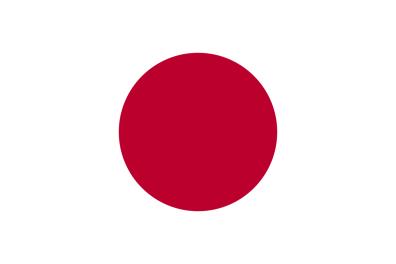Donate to Support Supercluster
Your support makes the Astronaut Database and Launch Tracker possible, and keeps all Supercluster content free.
SUPPORTSupercluster on Patreon
Your support makes the Astronaut Database and Launch Tracker possible, and keeps all Supercluster content free.
SUPPORTThis goes to
the moon
HAKUTO-R
HAKUTO-R is a commercial lunar exploration program operated by private Japanese spaceflight company ispace. The company has two upcoming lunar missions. Mission 1, a soft lunar landing planned to launch in 2022, and Mission 2, a lunar landing and deployment of a rover planned for 2024.
Mission 1 Payload Manifest
The “Rashid” lunar rover from the Dubai-based Mohammed bin Rashid Space Centre (MBRSC)
A “transformable lunar robot” from the Japan Aerospace Exploration Agency (JAXA)
A test module for a solid-state battery from NGK Spark Plug Co., Ltd. (NGK Spark Plug)
An artificial intelligence (AI) flight computer from Mission Control Space Services Inc. (Mission Control)
Multiple 360-degree cameras from Canadensys Aerospace (Canadensys)
A panel engraved with the names of HAKUTO crowdfunding supporters (during Google Lunar XPRIZE)
And a payload for which the disclosure of further information can be expected at a future date.
Courtesy of ispace.
ispace is a lunar exploration company with over 130 staff and offices in Japan, Europe and the United States. Founded in 2010, ispace managed Team HAKUTO, one of the 5 finalists in the Google Lunar XPRIZE competition. The company is building a small commercial lunar lander, which aims to provide a high-frequency, low-cost delivery service to the Moon, as well as a lunar rover for surface exploration. Aspiring to be a gateway for the private sector to bring their business to the Moon, ispace has also launched a lunar data business concept to support companies with lunar market entry. ispace is part of a team led by Draper, which was selected by NASA to compete in its Commercial Lunar Payload Services (CLPS) Program, and ispace Europe was selected by ESA to be part of the Science Team for PROSPECT, a program which seeks to extract water on the Moon.

With this
payload
Rashid
The Emirates' first lunar mission will send the "Rashid" rover to scout the moon's surface during the course of one lunar day.
Rashid totals a mass of 10kg and, with a footprint of approximately 0.5m x 0.5m, it is a very compact rover. On its roof, a deployable mast is fitted which elevates the rover’s main camera to a height of just under 70cm above the ground.
Mobility of the rover is provided by means of four wheels with grousers. Two identical 2048x2048 px CMOS wide-field cameras, each covering a field of view of 85 degrees are mounted on the rover. As already noted, the main camera is gimbaled at the top of the mast, thus providing 360-degree visibility and delivering the main operational awareness for rover drive operations. The second wide field camera is fixed to the rear of the rover. This camera provides a closer view of the rover tracks imprinted in the lunar soil.
The two optical cameras will deliver a wealth of data which will be also exploited scientifically. But the design goals for Rashid reach further. To develop the incorporation of a substantial scientific payload into the rover, the high level science requirements for the Rashid mission were set as follows.
1. The science system shall make use of the rover’s mobility
2. The science system shall be able to achieve its objectives at (almost) any location on the Moon.
CAM-M camera is an optical imager which will obtain high resolution images of the lunar surface. It is mounted statically at the front of the rover, pointing slightly ahead of its main body.
The LNG system consists of four cylindrical Langmuir probes which are mounted at different heights on the rover body, thereby tracing the electron densities between approximately 15cm and 65cm above ground. By using its drive capabilities, Rashid might thus be able to conduct a 3D mapping of the electron densities in the landing area.
Rashid will be equipped with an 80x64 px thermopile array, covering a field of view of approximately 38x31 degrees . This will allow it to resolve thermal features at cm scales in the vicinity of the rover.
Rashid will conduct an experiment to test in-situ different materials for their adhesive and abrasion properties to lunar regolith. To do so, different material samples will be mounted on the outer circumference of a wheel. The collection of dust on these samples will be monitored by means of the mast mounted main camera.
The science program of ELM is a joint effort by an international consortium of academic institutions, as well as industrial partners, under the leadership of MBRSC. This consortium is developing the testing and calibration of the instruments, as well as preparing for the science operations and data processing. The science data collected by Rashid will be made available after the mission to the entire science community for further exploitation.
The development of the Rashid rover is funded by the ICT Fund as part of the Mars 2117 initiative. Courtesy of USRA.
Image Credit: Mohammed Bin Rashid Space Centre

On this
rocket
Falcon 9 (Block 5)
Falcon 9 is a reusable, two-stage rocket designed and manufactured by SpaceX for the reliable and safe transport of people and payloads into Earth orbit and beyond.
Falcon 9 is the world’s first orbital-class reusable rocket.
Stats
Completed missions: 511
Total landings: 466
Total reflights: 435
The Falcon 9 has launched 71 humans into orbit since May 2020
Specs
Height: 70 m / 229.6 ft
Diameter: 3.7 m / 12 ft
Mass: 549,054 kg / 1,207,920 lb
Payload to Low Earth Orbit (LEO): 22,800 kg / 50,265 lb
Payload to Geostationary Transfer Orbit (GTO): 8,300 kg / 18,300 lb
Payload to Mars: 4,020 kg / 8,860 lb
On January 24, 2021, Falcon 9 launched the first ride-share mission to Sun Synchronous Orbit. It was delivering a record-setting 143 satellites to space. And while this was an important mission for SpaceX in itself, it was also the moment Falcon 9 overtook United Launch Alliance’s Atlas V for the total number of consecutive successful launches.
SpaceX’s Falcon 9 had become America’s workhorse rocket, launching 31 times in 2021. It has already beaten that record this year, launching almost an average of once a week. While most of the launches deliver Starlink satellites to orbit, the company is still launching the most commercial payloads to orbit, too.
Falcon 9 is a medium-lift launch vehicle, with the capability to launch over 22.8 metric tonnes to low earth orbit. Unlike any other rocket, its first stage lands back on Earth after separating from its second stage. In part, this allows SpaceX to offer the cheapest option for most customers with payloads that need to reach orbit.
Under its ride-share program, a kilogram can be placed in a sun-synchronous orbit for a mere 1.1 million dollars, far cheaper than all other currently operating small satellite launch vehicles.
The reusability and fast booster turnaround times have made Falcon 9 the preferred choice for private companies and government agencies. This has allowed SpaceX to capture a huge portion of the launch market.
Photo courtesy of Jenny Hautmann for Supercluster.

From this
Launch site
SLC-40 - Cape Canaveral Space Force Station, Florida
Space Launch Complex 40 (SLC-40) is one of two launch sites leased by SpaceX at Cape Canaveral Space Force Station (CCSFS) in Florida, specifically designed for preparing and launching Falcon 9 rockets. Constructed in the early 1960s, SLC-40 was initially used for 55 Titan III and Titan IV rocket launches, including the Cassini-Huygens mission to Saturn. The pad was active from June 18, 1965, to April 30, 2005.
SpaceX began leasing SLC-40 in 2007, converting it to support Falcon 9 rockets. The pad was first upgraded to accommodate the original version of Falcon 9 and later received another upgrade in 2013 to handle the larger, reusable Falcon 9 rocket. On September 1, 2016, an explosion during a Falcon 9 fueling test caused severe damage to the pad. It was rebuilt rapidly, with construction completed in just 10 months, from mid-February to late November 2017. SLC-40 resumed operations with the successful launch of a Dragon capsule to the International Space Station on December 15, 2017.
After adding a crew access arm to the launch tower, SpaceX launched their first crewed mission from SLC-40 on Saturday, September 28th 2024 for NASA's Crew-9 mission to the International Space Station.
Under SpaceX’s management, SLC-40 has been the site of numerous significant missions. Notable launches include the first all-commercial Dragon mission to the International Space Station, NASA’s DSCOVR mission, the Transiting Exoplanet Survey Satellite (TESS) for NASA and MIT, the first satellite for Turkmenistan, the classified Zuma mission for Northrop Grumman and the U.S. government, the first GPS-III satellite, and the Beresheet lunar lander for Israel. Additionally, in September 2024, SLC-40 will host its first crewed launch with SpaceX’s Crew-9 mission, marking a new milestone for the pad.
Cape Canaveral is a major launch site with four currently active launch pads for Atlas V, Delta IV Heavy, Falcon 9, and Minotaur rockets. Located on Florida’s east coast, it offers extensive access to space for a variety of missions, including those targeting the Space Station, Geostationary Earth Orbit, the Moon, interplanetary destinations, and polar trajectories. The site’s location ensures that launches occur over the open Atlantic Ocean, minimizing risks to populated areas.
Cape Canaveral is often confused with or referred to alongside NASA’s Kennedy Space Center on Merritt Island. While they are separate installations, both play pivotal roles in the U.S. space program. Cape Canaveral has a storied history of significant space missions, including the launch of the first U.S. Earth satellite, Explorer 1, in 1958; the first U.S. astronaut, Alan Shepard, in 1961; the first U.S. astronaut in orbit, John Glenn, in 1962; the launch of the first two-person U.S. spacecraft, Gemini 3, in 1965; and the first U.S. uncrewed lunar landing mission, Surveyor 1, in 1966.
SLC-40 and Cape Canaveral continue to be integral to SpaceX’s ambitious launch schedule and the broader U.S. space program, supporting a wide range of missions and contributing to advancements in space exploration.
Photo courtesy of Jenny Hautmann for Supercluster

Lander will
descend here
Lacus Somniorum "Lake of Dreams"
Lacus Somniorum ("Lake of Dreams") is a basaltic plain located in the northeastern part of the Moon's near side. It is the largest of 'Lacus' lunar features.
It is located at selenographic coordinates 37.56° N, 30.8° E, and has a diameter of 424.76 kilometers.
Courtesy of USGS/NASA

Booster will
land here
Landing Zone 2 (LZ-2)
LZ-2
Landing Zone 2 (LZ-2) is an 85 meter wide circular landing pad at the Cape Canaveral Space Force Station and is one of two SpaceX booster landing pads at the Florida spaceport.
The landing pad, as well as its twin, LZ-1 located a few dozen meters away, can support both single landings of a Falcon 9 or simultaneous landings of the two Falcon Heavy side boosters.
Photo courtesy of Jenny Hautmann for Superclsuter
Purchase This Photo Print
High-quality prints selected from the Supercluster team’s spaceflight photography are now available in our shop.
Our prints are produced on 10 mil (0.25 mm) thick, slightly glossy, fingerprint-resistant photo paper sourced from Japan.
Collect this photo of a booster landing: Jenny Hautmann's capture of Falcon Heavy side boosters returning to Earth after launch.

Here's where to view HAKUTO-R Mission 1
Viewing Sites
- Alan Shepard Park
- A. Max Brewer Bridge
- Apollo Saturn V Center / Banana Creek
- Cherie Down Park
- Cocoa Beach Pier
- Jetty Park
- Kennedy Space Center Visitor Complex
- LC-39 Observation Gantry
- Lori Wilson Park
- Playalinda Beach
- Rotary Riverfront Park
- Sand Point Park
- Sidney Fischer Park
- Spaceview Park
Know Before You Go
SLC-40 was built in the early 1960s and hosted its first launch on June 18, 1965. Since then, it has launched nearly 100 missions on the Titan III, Titan IV, and Falcon 9 rockets.
During the Titan rocket era, SLC-40 was used to launch two interplanetary missions: Mars Observer to Mars and Cassini-Huygens to Saturn.
With the Falcon 9, the pad became the first Cape Canaveral site to host a launch to the International Space Station.
The pad is located on historic Cape Canaveral Air Force Station, FL - the primary launch center for the United States.
The Florida launch site handles the vast majority of U.S. launches every year and has been the starting point of numerous history-making missions for the United States, including:
- First U.S. Earth satellite in 1958
- First U.S. astronaut in 1961
- First U.S. astronaut in orbit in 1962
- First two-person U.S. spacecraft 1965
- First three-person U.S. spacecraft in 1968
GET THE SUPERCLUSTER APP
THE SUPERCLUSTER PODCAST
A podcast exploring the amazing milestones that changed space history, the wildest ideas that drive our future, and every development in this new Golden Age of Space.
Donate to support
Your support makes the Astronaut Database and Launch Tracker possible, and keeps all Supercluster content free.
SupportCOPYRIGHT 2021 SUPERCLUSTER LLC





